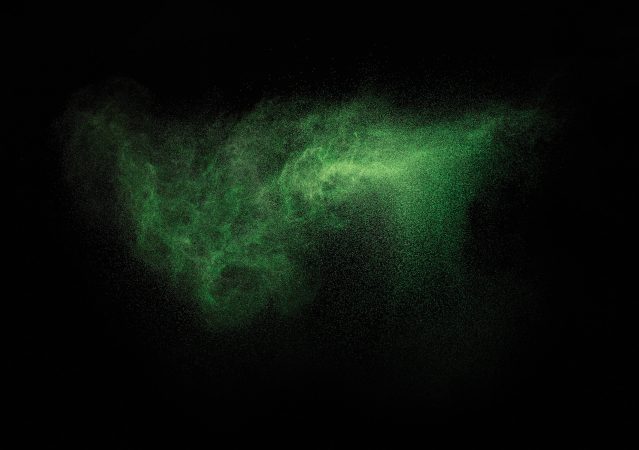

We may earn revenue from the products available on this page and participate in affiliate programs. Learn more ›
Razer, the company I associate with popularizing RGB “gamer” lighting for PC peripherals, has taken on a strange, confounding new side hustle: making COVID-19 masks. Originally announced in January 2021 as “Project Hazel,” the Razer Zephyr is a “wearable air purifier” made for members of the mask-wearing public who want something more durable than a typical cloth or surgical mask and flashier than a disposable N95.
Products like the Zephyr invite a lot of scrutiny. Is this an honest, good-faith attempt to create an upgraded device for people who plan to wear masks in public long-term, or is it a cash grab? Does it work at all? What, if anything, can a big hunk of plastic do that an approved N95 mask can’t? These are all good, fair questions to ask when a company with no history making medical technology quickly develops and launches an expensive piece of kit—the Zephyr mask costs $100, plus the cost of filter refills.
After spending a little over the week using the Zephyr, I have mixed feelings. The Zephyr isn’t a major achievement in tackling COVID-19 and/or future pandemics: It doesn’t provide additional protection over what most Americans wear now, while adding new concerns around its hefty weight and short battery life. It may be somewhat effective as a casual masking tool, at least on paper, and does offer some comforts that disposable N95 masks don’t.
My biggest takeaways from wearing, using, and examining the Zephyr have all been cultural. Despite its rapid transition from concept to real-life gadget, it feels like a product that was made for a different phase of post-COVID life. In the time prior to wide access to the COVID-19 vaccines and my own vaccination, I would have killed for a mask like the Zephyr. Now, it feels impractical, which makes its gamer-gear styling feel gaudy, rather than futuristic.
Blow Hard, Shine Bright
What does the Razer Zephyr actually do?
The Razer Zephyr is a hybrid filtered-mask and face shield. The hard plastic covering, which measures 7.16 by 3.5 by 3.94 inches (WDH), covers the lower half of your face, roughly from ear to ear. The inside of the mask features a detachable silicone seal that fits snugly around your nose and mouth. Though you have protection from the hard plastic outer mask and the inner silicone, the removable seal is likely not 100-percent air-tight.

Meanwhile, there are three largish holes in the mask, which allow air in through replaceable N95-quality filters. Two of those filtered air holes, the big round circles popping out the side of the mask, feature fans that pull in a cooling breeze. I found these reduce some of the discomfort I’ve felt when wearing masks for a long period of time. The fans are also customizable: They can blow at a mild, quiet 4,200RPM, or an audibly blowy, but soothing 6,200 RPM. Regardless of their speed, rings of LED lighting provide an unmistakable reminder of their Razer lineage.

The clear face covering provides the most useful upgrade over a typical N95 mask. The central part of the mask, which covers your nose and mouth, is transparent so people can see the shape of your mouth and your changing facial expressions when you speak. That inner chamber can be lit up with a rare practical use for Razer’s signature “Chroma” RGB lighting, which makes it easier for people to see your mouth. The change isn’t the revelation it ought to be, though: The cavernous inside of the Zephyr can obscure your mouth, depending on the shape of your face. A light color (or white) lighting makes it easier to pick up facial expressions, but you aren’t going to read someone’s lips through the mask.
What about power?
Battery life is potentially a problem for the Zephyr, especially if you plan to wear it out all day. According to Razer, the battery should last anywhere from 3.5 hours with RGB lighting on and the fans on high to 8 hours with the lighting off and the fans on low. It isn’t as if the Zephyr stops protecting you when the battery’s dead, but the bigger, heavier Zephyr mask definitely loses a lot of its appeal without the fans and lights.
The Zephyr charges via USB-C port at the bottom of the mask. It takes 5 hours to fully recharge, so a mid-session top-off isn’t really in the cards. (If there’s any device that needs fast-charging, it’s this.)
How do you change the lights?

The Razer Zephyr has its own discrete “Zephyr” app for iOS and Android, which controls the custom RGB lighting and fan speed. The app is a fairly simple, no-frills affair: After pairing via Bluetooth, there are a few toggles that let you switch the fans, the inner lighting around your mouth, and the outer lighting around the fans. The lighting options are limited compared to a Razer keyboard like the Razer Huntsman V2 Analog, but you have preset patterns and the ability to choose your own shade from the full RGB spectrum.
Does the Razer Zephyr work?
This is the biggest question and one that I’m realistically not equipped to verify. On paper, the Zephyr is an effective face covering. Based on fit, the silicone padding creates as good a seal as a properly adjusted disposable N95 mask. That said, it is likely not airtight, given that it’s easily removable. According to Razer, the proprietary filters for the mask are rated to filter at least 95 percent of particles above 0.3 microns. The filters have also received a 99-percent bacterial filtration efficiency (BFE) rating. In theory, the assurances are all there, and that’s the most I can really say on the matter from my own testing.

That said, there are critics out there who have raised concerns. One YouTuber, Naomi Wu, posted an extensive breakdown of the Zephyr and calls its filtration “useless” compared to medical-grade respirators, citing issues with the seal, the size of the filters and fans, and more. While I, for one, did not expect the mask to provide any more protection than a disposable mask, it’s worth noting that its protective capabilities are in dispute, and definitely fall short of the medical-grade equipment that the design imitates.
What’s the deal with the filters?
For me, the most contentious elements of the Zephyr are its N95-grade filters, which are proprietary and uniquely shaped, effectively ensuring that you won’t buy replacements from anyone else. According to Razer, the filters are rated to work through three 8-hour days of use and should be replaced after that for optimal filtration.

Here’s the kicker: The standard, $99 Zephyr mask only comes with just three sets of filters, or enough protection to use the mask as intended for nine days. A replacement pack with 10 extra sets, or 30 days of protection, costs an extra $29.99. The filters alone cost more than the disposable alternative, especially if you buy in bulk. (For example, here’s a package of 50 NIOSH-approved N95 masks for $59.99.)
Now, after living through COVID-19 mask shortages, many people may be comfortable with stretching the use of filters by cycling through multiple sets every few days and heat-treating them. The CDC asserts that such strategies are no longer necessary, so I can’t recommend doing this, though I expect many Zephyr owners will at least consider it. Not only is the Zephyr not a frugal option, but it’s also a fairly lavish luxury. (Assuming you’re replacing the filters regularly.)

On the bright side, changing the filters is very easy. All three filters reside under plastic covers that attach magnetically to the mask. I worried that the magnets would not be strong enough to hold the covers in place, but they generally do stay on, even when you shake your head. The covers will pop off after even a short drop, sending the covers flying and potentially ruining the filters. If you are out in the world with Zephyr, but aren’t wearing it, you should put it in a bag.
What’s it like wearing the Zephyr?
In many ways, the Razer Zephyr is more comfortable than most masks. The silicone seal doubles as a light cushion, which feels soft against your face. The cooling breeze from the fans dissipates the heat that normally builds up under the mask. Unfortunately, the fans don’t prevent condensation from building up on the shield’s inner surface. Though you can actually wipe and dry it because it’s made of hard plastic.
At the same time, it is much heavier than most face day-to-day face coverings. At 7.2 ounces, I found myself strategically positioning the mask’s two adjustable straps to distribute the weight evenly. Otherwise, the mask pulled down on my nose and away from my face.

Its large size and hard body also made choosing when to wear and when not to wear the Zephyr also turned out to be more complicated than I expected. The size is fairly impractical if you tend to put a mask on when you enter a building and take it off when you get outside. It takes longer to put it on and take it off. You also need a bag or somewhere to put it when you aren’t wearing it.
Then there’s the social element. Though I only received one or two looks from strangers—far less than I expected—I felt fairly self-conscious about wearing the Zephyr. It’s big, it’s bright, it’s colorful. Even in New York, it’s a very conspicuous accessory, even without any flashing lights. If that’s your style, then it’ll be a great fit, but I almost felt compelled to bring it up in conversation because I assumed everyone was thinking, “What the heck is that thing on your face?”
So, who should buy the Razer Zephyr?
Practically speaking, the Razer Zephyr is too expensive and too large to be practical for most people. It may make wearing masks all day, inside and outside, a little more comfortable. But that comfort comes at a very large cost compared to a reusable cloth or even disposable N95 masks. And, unlike NIOSH-approved disposable N95 masks, there are questions about how well it will protect you.
While it’s premature to suggest it, to me the Zephyr really feels like an artifact of a not-so-distant past when we feared that we would all have to wear a mask at all times for the rest of our lives. Thankfully, we aren’t living in that world for the time being. Unfortunately for Razer, that means the Zephyr was archaic the day it launched.























